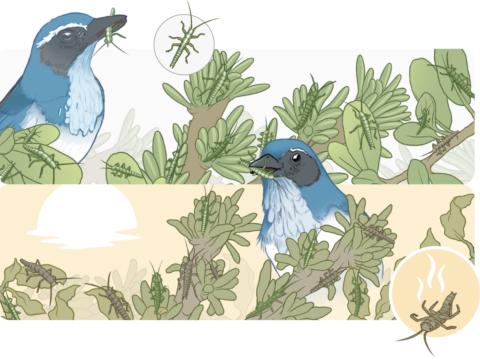image
A long-term field study of Californian stick insects (Timema cristinae) reveals how competing selection pressures shape their evolution. (Illustration: Mark Belan/ArtSciStudios)
Primary tabs

A long-term field study of Californian stick insects (Timema cristinae) reveals how competing selection pressures shape their evolution. While brown-colored stick insects experience lower predation rates from Californian scrub jays (Aphelocoma californica) than their green counterparts during hot, dry years when bright green leaves are scarce, they face higher mortality due to reduced heat tolerance. This trade-off demonstrates how climate and predation simultaneously drive evolutionary adaptation in natural populations, and this case study has been used to develop statistical models that predict future evolutionary outcomes. (Illustration: Mark Belan/ArtSciStudios)
